What Will the Real Faces of the Terracotta Army and the Eight Banners Army Look Like After AI Reconstruction?
The use of AI (artificial intelligence) to create portraits has become a popular trend among internet users. With the advancement of AI technology, portrait creation has become simpler and easier than ever. Users only need to describe the subject they want to paint with text, choose their preferred style, and AI will generate an artwork that will surprise you.
Recognizing AI’s ability to create images of historical figures or characters described only through literature, Chinese graphic experts have employed artificial intelligence to realistically reconstruct their faces.
Recently, a series of images of the Terracotta Army from the mausoleum of Qin Shi Huang have been widely shared, attracting hundreds of thousands of views and discussions on social media. Let’s admire this photo collection!
1. The Terracotta Army
The Terracotta Army or Qin Shi Huang’s Cavalry Statues is a collection of life-sized statues of soldiers and horses made of terracotta, located in the mausoleum of Qin Shi Huang. The Terracotta Army was discovered on March 29, 1974, near the city of Xi’an, Shaanxi Province, northwestern China.
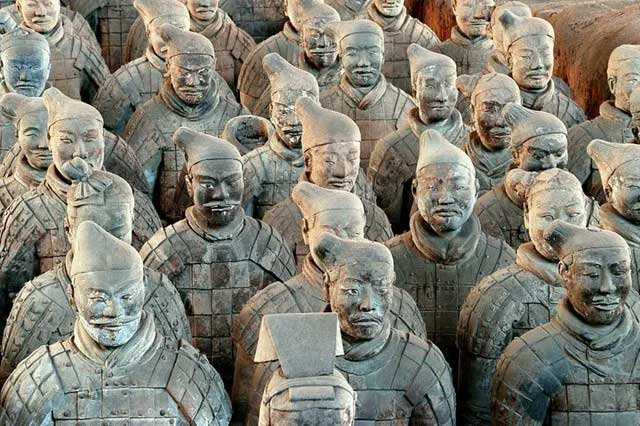
The Terracotta Army is a collection of life-sized statues of soldiers and horses made of terracotta. (Photo: Sohu).
The Terracotta Army was buried alongside Emperor Qin Shi Huang of the Qin dynasty between 210-209 BC. The army was constructed to protect Qin Shi Huang in the afterlife.
Since its discovery in 1974, archaeological excavations have been ongoing. The excavation process is prolonged due to the fragility of the terracotta figures and the challenges in preserving these statues. The statues were crafted from clay, fired at low temperatures, and coated with a layer of paint for durability. According to archaeologists, no two statues are alike in facial features, size, or paint color, making them appear as vibrant as a real army.
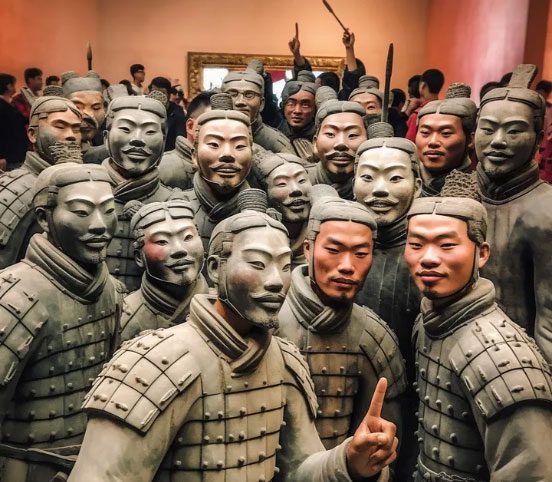
AI has reconstructed their true faces based on the statues of the Terracotta Army. (Photo: Sohu).
To date, 8,099 statues have been excavated. The statues include infantry soldiers, archers, and generals in various poses, some standing upright while others are bowing with bows, spears, pikes, swords wrapped in bronze… These are the weapons used in China during that time. In addition to the soldier statues, life-sized and intricately designed chariot figures have also been discovered in the army complex. The statues are housed in three separate tomb pits, with a fourth pit being empty. It is believed that the first tomb contains 6,000 soldier statues, constituting the main force of Qin Shi Huang. The first tomb is located to the west of the mausoleum. The second tomb contains about 1,400 cavalry and infantry statues accompanying chariots, serving as the guard unit, covering an area of 19,659 m². The third tomb houses command-level figures and a four-horse chariot over an area of 1,524 m², containing 68 statues.

A modern-style selfie of the Terracotta Army. (Photo: Sohu)
The statues in the Terracotta Army range in height from 175 to 190 cm. Each statue differs in posture and facial expression, with some even featuring distinct colors.

Most images are selfies of the terracotta soldiers. (Photo: Sohu)
AI has used these statues to create images that make viewers double-take because of their striking realism. Most of the images are modern-style selfies of the terracotta soldiers, with backdrops that transition from ancient times to the present. Surprisingly, the Terracotta Army appears as real people, with only a few being statues.
2. The Eight Banners Army
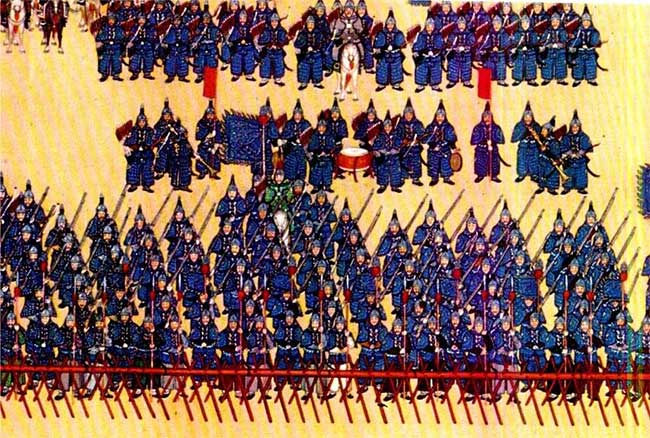
The Eight Banners Army of the Qing Dynasty in an ancient painting. (Photo: Sohu)
The Manchu Eight Banners, also known as the Eight Banners, was a military organization unique to the Manchu people and a formidable army during the Qing Dynasty. According to The History of the Qing Dynasty, the Eight Banners were established under Nurhaci. Initially, Nurhaci divided his forces into four banners, identified by their flag colors: Yellow Banner, White Banner, Red Banner, and Blue Banner. After unifying the Jurchen tribes, Nurhaci expanded his military to include four additional banners: Plain Yellow Banner, Plain White Banner, Plain Red Banner, and Plain Blue Banner. The Eight Banners played a significant role in the conflicts between the Qing and Ming dynasties.
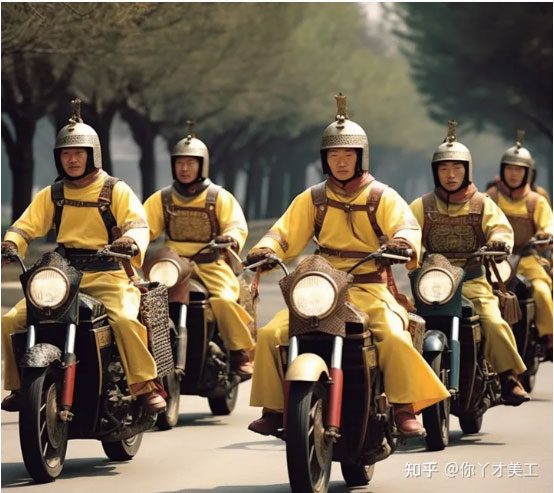
The Yellow Banner Army of the Manchu Eight Banners. (Photo: Sohu)
Each banner comprised 7,500 troops, totaling 60,000 soldiers in the Eight Banners. The number of troops consistently increased after each campaign. By 1626, during the First Ningyuan Campaign, the Eight Banners’ strength had reached 130,000 soldiers.
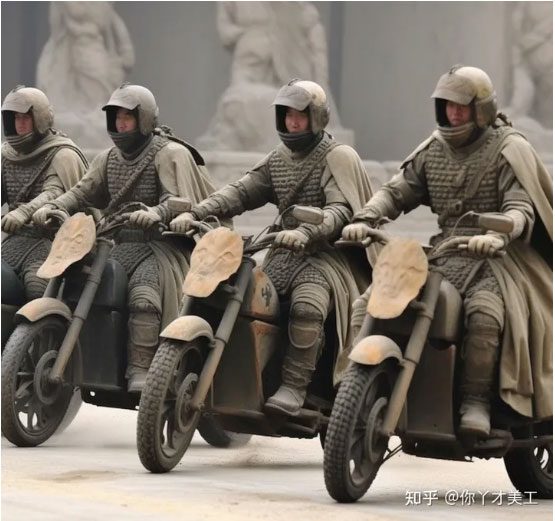
AI created a modern-day Eight Banners Army. (Photo: Sohu)
The Plain Yellow Banner was the elite and most noble force, directly commanded by Nurhaci. The remaining seven banners were entrusted to his sons and close associates.
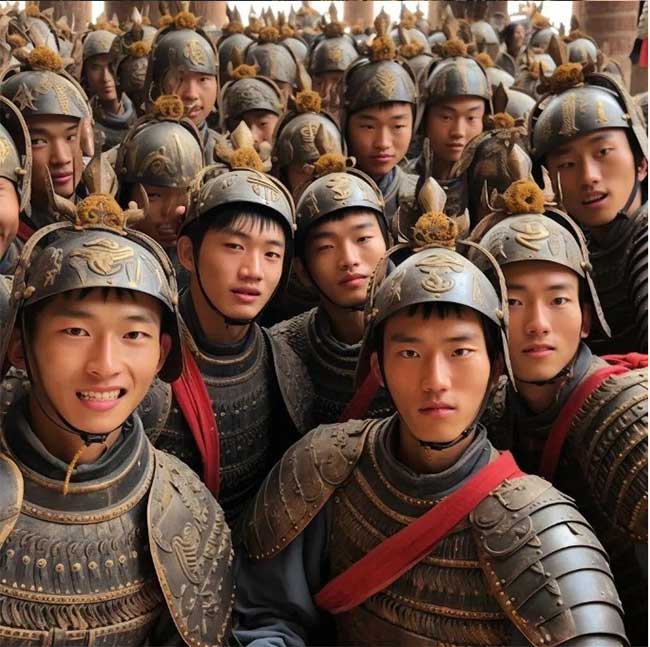
AI created a selfie of the Eight Banners Army. (Photo: Sohu)
Within the Eight Banners Army, there were almost no Han Chinese. Han soldiers who enlisted were placed in the Six Companies (six barracks designated for Han recruits). At its peak, the Qing Dynasty had 250,000 Eight Banners soldiers and 650,000 soldiers from the Six Companies.
The Eight Banners Army had high combat effectiveness, strict discipline, and was well-equipped. Besides conventional weapons, they also possessed firearms, artillery, and cannons.
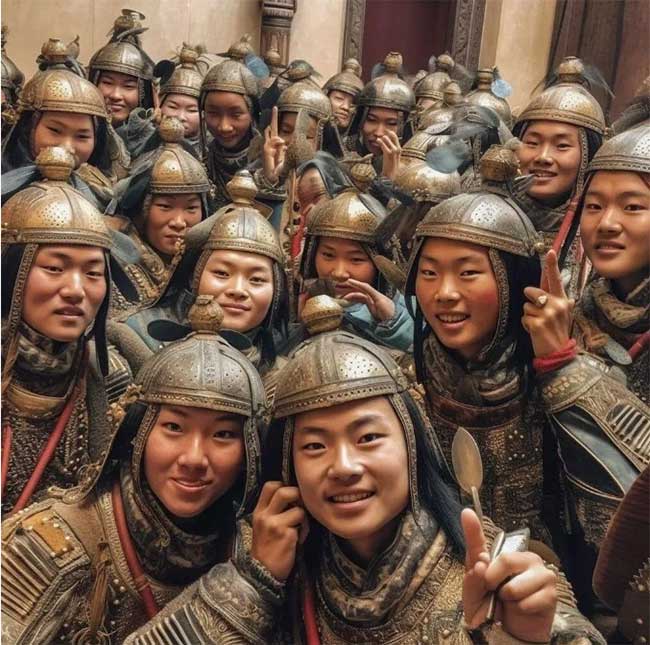
AI created a fascinating collection of images of the Eight Banners Army. (Photo: Sohu)
During the Qing Dynasty, the Eight Banners barracks were scattered throughout the country to preemptively quell any potential rebellions by the Han people.
The Qing Dynasty relied on the Eight Banners system as a fundamental structure, thus descendants of the Eight Banners enjoyed certain privileges in education, civil service examinations, and economic and military spheres.
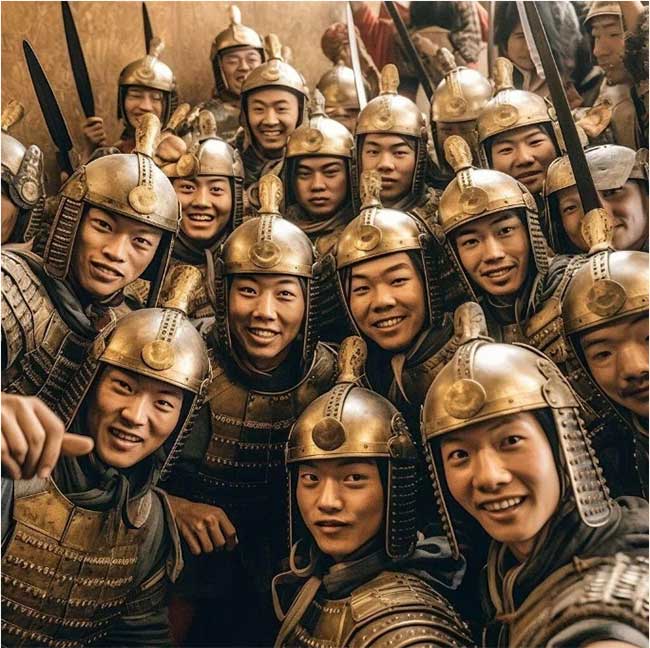
This completely new style has surprised many people and delighted them with AI’s creativity. (Photo: Sohu)
Based on old paintings and documents, AI has generated numerous images of the Eight Banners Army. In addition to modern-style selfies, AI has also provided many portraits of this army using motorcycles. This entirely new style has captivated many people, showcasing the creativity of artificial intelligence.
Indeed, the photo collections of the two armies crafted by AI have attracted hundreds of thousands of views and shares. Many netizens expressed their astonishment at the vividness of the images.


















































